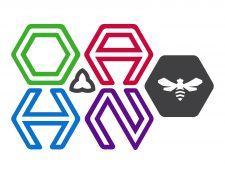OAHN Bee Network: Investigation of the role of varroa mites in Ontario honey bee health using next generation sequencing (NGS) technology

Project Lead: Dr. Hugh Cai (AHL)
Collaborators: Paul Kozak, Nuria Morfin, Lisa Ledger, Qiu You, Patricia Bell-Rogers, Jennifer Zechel, Aparna Krishnamurthy, Durda Slavic, Ernesto Guzman-Novoa
To view the full report, please download the PDF here: https://www.oahn.ca/wp-content/uploads/2022/10/OAHN-Bees-Project-30585-Final-Report-for-WEB.pdf
To read the full paper on this (written by Dr. Nuria Morfin), please click here: https://sciendo.com/fr/article/10.2478/jas-2022-0009
Abstract
Varroa destructor parasitism is associated with extreme honey bee (Apis mellifera) colony losses in the northern hemisphere. Varroa destructor causes severe damage, including a decrease in bee longevity and immunosuppression, and acts as a vector for viruses, such as Deformed wing virus (DWV-A). The surveillance of viral pathogens in V. destructor samples is essential to assess risks of emerging virulent viral variants (such as VDV-1) and evaluate their impact on honey bee health. Thus, the objective of this study was to identify viral pathogens in V. destructor and honey bee samples collected in Ontario, Canada, from 2015 to 2019 with the use of metagenomics and real time PCR (qPCR). DWV-A and VDV-1 had the highest abundance of viral transcripts (7.5 log2 and 5.72 log2, respectively). Acute bee paralysis virus (APBV) and Bee macula virus were also identified. Viral identification and quantification in V. destructor samples using metagenomics will facilitate the surveillance of viral pathogens. This surveillance technique will assist diagnostic laboratories in delivering timely and accurate diagnoses and risk assessments, which in turn will help honey bee producers to take adequate measures to mitigate the damage caused by V. destructor and associated viruses.

